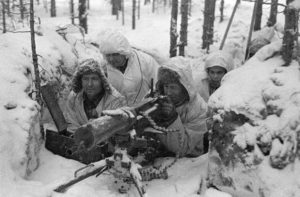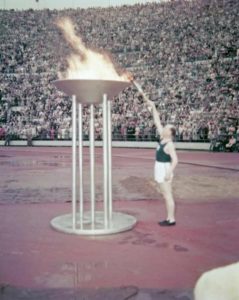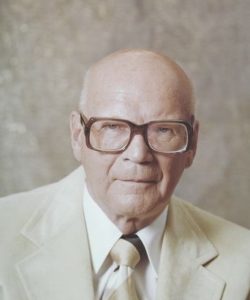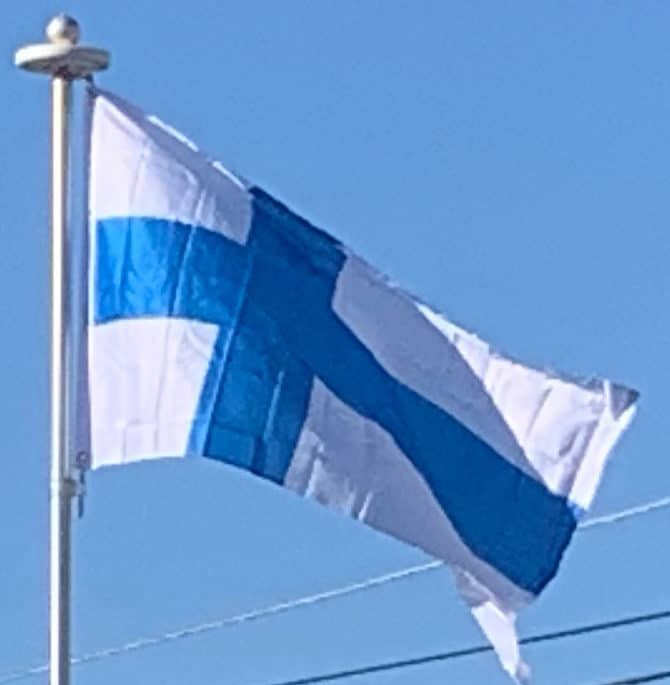
The treaties signed in 1947 and 1948 with the Soviet Union included Finnish obligations, restraints, and reparations—as well as further Finnish territorial concessions in addition to those in the Moscow Peace Treaty of 1940. As a result of the two wars, Finland ceded most of Finnish Karelia, Salla, and Petsamo, which amounted to 10% of its land area and 20% of its industrial capacity, including the ports of Vyborg (Viipuri) and the ice-free Liinakhamari (Liinahamari). Almost the whole population, some 400,000 people, fled these areas. The former Finnish territory now constitutes part of Russia’s Republic of Karelia. Finland was never occupied by Soviet forces and it retained its independence, but at a loss of about 93,000 soldiers.
Finland rejected Marshall aid, in apparent deference to Soviet desires. However, the United States provided secret development aid and helped the Social Democratic Party, in hopes of preserving Finland’s independence. Establishing trade with the Western powers, such as the United Kingdom, and paying reparations to the Soviet Union produced a transformation of Finland from a primarily agrarian economy to an industrialised one. Valmet was founded to create materials for war reparations. After the reparations had been paid off, Finland continued to trade with the Soviet Union in the framework of bilateral trade.
In 1950, 46% of Finnish workers worked in agriculture and a third lived in urban areas. The new jobs in manufacturing, services, and trade quickly attracted people to the towns. The average number of births per woman declined from a baby boom peak of 3.5 in 1947 to 1.5 in 1973. When baby-boomers entered the workforce, the economy did not generate jobs quickly enough, and hundreds of thousands emigrated to the more industrialized Sweden, with emigration peaking in 1969 and 1970. The 1952 Summer Olympics brought international visitors. Finland took part in trade liberalization in the World Bank, the International Monetary Fund and the General Agreement on Tariffs and Trade.

Officially claiming to be neutral, Finland lay in the grey zone between the Western countries and the Soviet Union. The YYA Treaty (Finno-Soviet Pact of Friendship, Cooperation and Mutual Assistance) gave the Soviet Union some leverage in Finnish domestic politics. This was extensively exploited by president Urho Kekkonen against his opponents. He maintained an effective monopoly on Soviet relations from 1956 on, which was crucial for his continued popularity. In politics, there was a tendency of avoiding any policies and statements that could be interpreted as anti-Soviet. This phenomenon was given the name “Finlandization” by the West German press.

Despite close relations with the Soviet Union, Finland maintained a market economy. Various industries benefited from trade privileges with the Soviets, which explains the widespread support that pro-Soviet policies enjoyed among business interests in Finland. Economic growth was rapid in the postwar era, and by 1975 Finland’s GDP per capita was the 15th-highest in the world. In the 1970s and ’80s, Finland built one of the most extensive welfare states in the world. Finland negotiated with the European Economic Community (EEC, a predecessor of the European Union) a treaty that mostly abolished customs duties towards the EEC starting from 1977, although Finland did not fully join. In 1981, President Urho Kekkonen’s failing health forced him to retire after holding office for 25 years.
